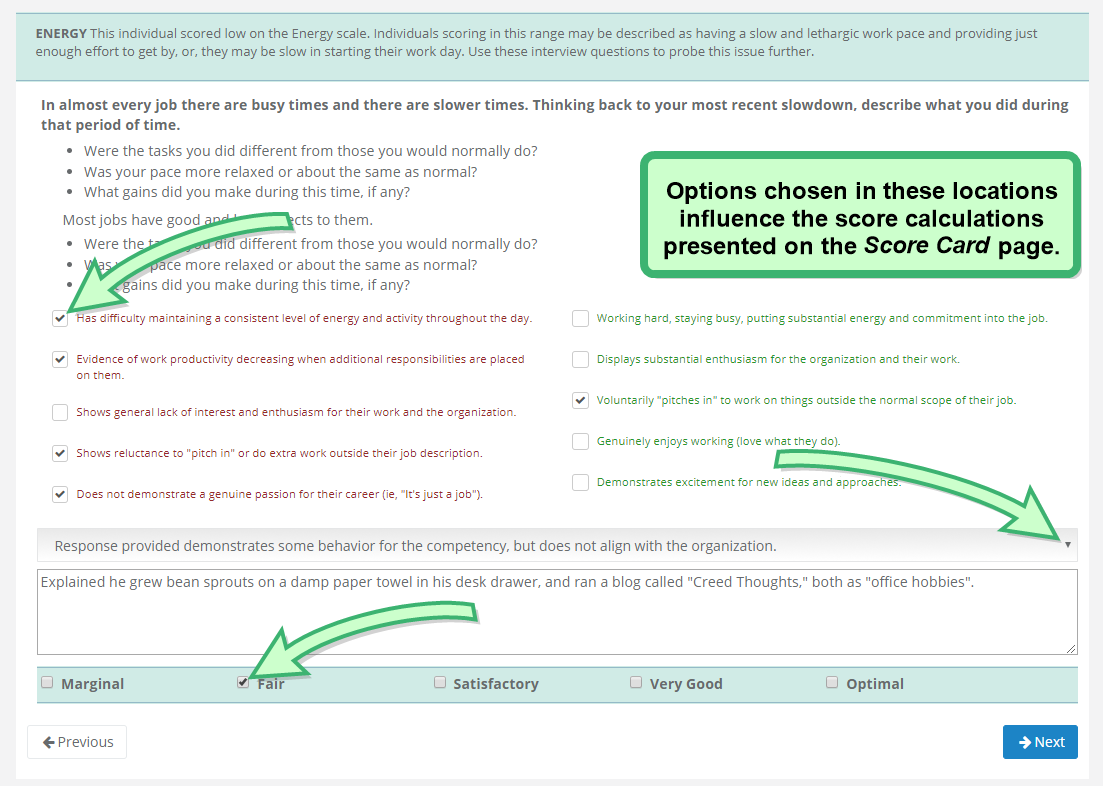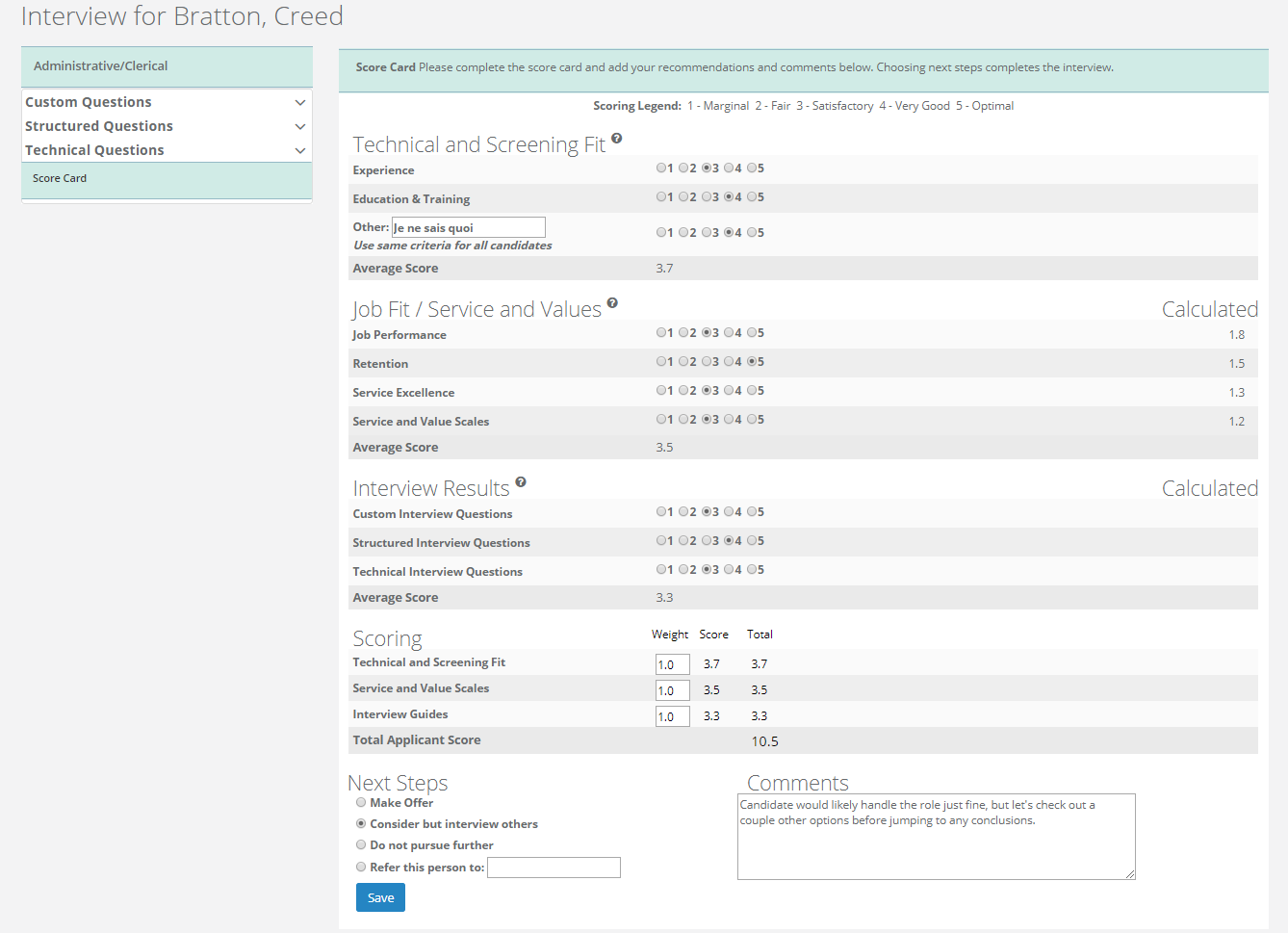Scoring Interviews
Interviews are scored via two different methods. The first method of scoring is managed in the interview question pages. During a candidate's response, pick a ranking, continue to the next question, and repeat. The scores on the Score Card page will be pre-populated based on the answers chosen on these pages.
The other scoring method is to input or adjust scores on the Score Card page, at the conclusion of the interview. Each method influences the candidate's interview scores in its own way. These instructions will help ensure you're using each of them to their fullest potential.
On the Interview Question pages, there are some places where your input affects the calculated score provided on the score card. These include:
Response Checkboxes. Every interview question has between six and eight checkboxes used to mark the presence of positive or negative characteristics in an applicant's response to a question. Checkboxes with red rext are considered negative qualities, and negatively impact the candidate's score. Alternately, checkboxes with green text are considered positive qualities and will positively impact their score.
Notes. This text box exists for you to type up your own notes regarding the candidate's given responses. Each question page has its own Notes area, so you can type your impressions of each response as they occur.
Overall Response Drop-down. This menu is used to pick an overall evaluation sentiment regarding the candidate's response. When an option is picked from this list, it also selects the corresponding checkbox underneath the Notes field. If the option is changed, the active checkbox changes with it.
Overall Response Checkboxes. These check boxes are synchronized with the Overall Response drop-down, in that their responses are tied to one another. If a new box is checked in this row, it also changes the option selected in the drop-down menu above to the corresponding sentiment.
At the end of the interview workflow, the Score Card page displays. This is where the overall candidate score is broken down, and can be fine-tuned.
The following sections allow you to adjust the scores by category. The default scores shown on this page are pre-populated, based on which response checkboxes have been selected, and the candidate's overall response rankings for each question. Scores range from 1 to 5, with 1 being considered "Marginal" and 5 being "Optimal."
- Technical and Screening Fit.These include scores for Experience, Education and Training, in addition to one for any other applicable criteria that would apply to their Technical and Screening attributes.
- Job Fit / Service and Values. These scores are used to help determine the "fit" of the candidate for the position. There are points given for Job Performance, Retention, Service Excellence, and Service and Value Scales.
- Interview Results. Here, provide the average scores for structured, custom, and technical interview questions.
-
Scoring. This provides a summary of the scores for the previous three categories, and averages them out to provide you with the Total Applicant Score. Apply weighting to overall scores, if desired, by entering a number between 0 and 2 into the Weight boxes. These act as score multipliers, allowing you to multiply overall category scores between a factor of 0 to 2.
Note: Weighted scores are applied only to one candidate at a time. If you change one candidate's weights, you will want to adjust them equally for any other candidates as well to maintain scoring consistency.
The Next Steps and Comments portions are the final two parts of the interview process, and are found at the bottom of the page underneath the Scoring area.
Select the desired option to proceed from the Next Steps area, then enter a comment in the Comments box. As this is a summary page, it would be most helpful to write a quick summary of their personality, skills, experience, what they could bring to the organization- in a nutshell, why you would or wouldn't feel comfortable hiring them for the job.
When all of this is complete, click Save to end the interview workflow.





